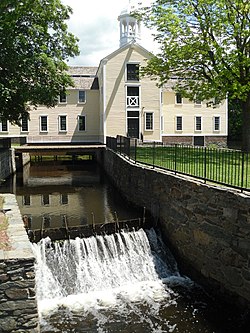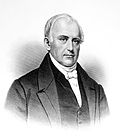| Slater | |
|---|---|
 Slater Mill (1790), the first textile mill in America. | |
| Current region | Rhode Island, U.S. Connecticut, U.S. Massachusetts, U.S. |
| Place of origin | United States and Britain |
The Slater family is an American philanthropic, political, and manufacturing family from England, Rhode Island, Massachusetts, and Connecticut whose members include the "Father of the American Industrial Revolution," Samuel Slater, a prominent textile tycoon who founded America's first textile mill, Slater Mill (1790), and with his brother John Slater founded Slatersville, Rhode Island in North Smithfield, Rhode Island in 1803, America's first planned mill village. The family includes various merchants, inventors, art patrons, and socialites. John Fox Slater, was a prominent abolitionist who founded the Slater Fund and built the historic John F. Slater House and Slater Library. William A. Slater was a noted art collector and philanthropist who created the Slater Memorial Museum in Connecticut. [1] After moving many of their mills to the South from New England, the village of Slater-Marietta, South Carolina was named after the family. [2]




